The mentor: Guiding professional development through knowledge sharing
Professional development has become a crucial component of career success. Employees are constantly seeking ways to enhance their skills, grow within their organizations, and prepare for leadership roles. As a recruitment agency in Cape Town, we know that one of the most effective ways to achieve this is through mentorship. Mentorship is a structured and meaningful relationship where experienced professionals guide and develop the next generation of talent. Whether you’re an employer looking to build a strong leadership pipeline or a professional aiming to advance in your career, mentorship can be a powerful tool for success. In this blog post, we will explore how you can start guiding professional development through knowledge sharing, and how businesses can use mentorship for succession planning.
The role of mentors in professional development
A mentor is a trusted guide, advisor, and motivator. Effective mentors offer insights, share experiences, and help mentees navigate career challenges. But what makes guiding professional development so valuable?
1. Providing career guidance
One of the primary responsibilities of a mentor is to provide direction. Many professionals, especially those early in their careers, struggle with decision-making and career planning. A mentor can help by:
- Offering industry insights and trends.
- Identifying growth opportunities.
- Helping mentees set achievable career goals.
By working closely with an experienced mentor, professionals gain clarity on their career paths and make informed decisions that align with their aspirations.
2. Enhancing skill development
Mentors play a key role in helping mentees develop critical skills, including:
- Leadership and management skills.
- Communication and negotiation techniques.
- Technical and job-specific expertise.
By sharing their own experiences and knowledge, mentors accelerate a mentee’s learning process, helping them develop skills that might take years to acquire on their own.
3. Building confidence and motivation
Navigating a career can be daunting, and self-doubt can hold professionals back from seizing opportunities. Mentors provide encouragement, constructive feedback, and motivation, helping mentees build self-confidence.
This support system is essential in overcoming career setbacks and pushing professionals toward success.
Knowledge sharing: The key to professional growth
Knowledge sharing is a cornerstone of mentorship and plays a critical role in shaping future leaders. But why is it so important?
1. Preserving institutional knowledge
Every organization has valuable institutional knowledge—insights, best practices, and lessons learned over the years. Without effective knowledge transfer, companies risk losing critical information when experienced employees retire or leave. Mentorship ensures that this knowledge is passed down to the next generation.
2. Encouraging a culture of learning
When companies encourage knowledge sharing, they foster a culture of continuous learning. Employees become more engaged, innovative, and proactive in seeking professional development opportunities. A strong learning culture leads to:
- Higher employee retention.
- Increased collaboration among teams.
- Better problem-solving and decision-making.
3. Bridging the skills gap
Many industries face a skills gap, where employees lack the necessary expertise to meet market demands. Mentorship helps bridge this gap by allowing seasoned professionals to train and upskill younger employees. This process benefits both individuals and businesses, ensuring the workforce remains competitive and future-ready.
Mentorship as a strategic tool for succession planning
Succession planning is about ensuring business continuity, stability, and growth over the long term. Organizations that proactively invest in developing their future leaders gain a competitive advantage by fostering a strong leadership pipeline.
Mentorship is one of the most effective strategies for succession planning. By pairing experienced leaders with high-potential employees, companies can nurture talent from within, transfer critical knowledge, and prepare individuals to take on key roles when the time comes. A well-structured mentorship program reduces turnover, minimizes disruptions, and creates a smooth transition process when leadership changes occur.
Let’s explore how mentorship plays a pivotal role in identifying, guiding professional development, and preparing future leaders.
1. Identifying and cultivating high-potential employees
Not every employee is suited for leadership, and identifying future leaders early is essential for effective succession planning. A mentorship program helps organizations spot high-potential employees by assessing their:
- Leadership abilities – Do they naturally take initiative, motivate others, and drive results?
- Problem-solving skills – Can they analyze challenges, make strategic decisions, and adapt to changing circumstances?
- Commitment to growth – Are they eager to learn, develop new skills, and take on greater responsibilities?
By embedding mentorship into daily operations, businesses can observe employee potential in real-world scenarios rather than relying solely on performance reviews. Once these high-potential employees are identified, targeted mentorship provides structured development, personalized guidance, and hands-on leadership training to prepare them for future responsibilities.
2. Transferring leadership knowledge and skills
Leadership is not just about technical expertise, it requires a blend of strategic thinking, decision-making, team management, and adaptability. Without a structured mentorship program, these critical skills can be difficult to pass down.
A mentorship-driven approach ensures that:
- Institutional knowledge is preserved – Senior leaders share their experiences, best practices, and insights to help mentees avoid costly mistakes and accelerate their growth.
- Leadership gaps are bridged – Employees are exposed to real-world leadership challenges before officially stepping into higher roles, making the transition smoother.
- Soft skills are refined – Communication, emotional intelligence, conflict resolution, and decision-making are all essential leadership traits that are best developed through hands-on mentorship.
By actively pairing seasoned executives with emerging leaders, businesses create a continuous cycle of leadership development, ensuring that no critical knowledge is lost when a leader moves on or retires.
3. Strengthening business continuity and reducing risk
When organizations lack a succession plan, they face serious risks when key employees leave—whether due to retirement, career changes, or unforeseen circumstances. Without a strong pipeline of prepared leaders, businesses may experience:
- Operational disruptions – Teams struggle to adjust when leadership roles are suddenly vacant.
- Increased hiring costs – External recruitment for senior positions is expensive and time-consuming.
- Cultural misalignment – New hires from outside the organization may take time to adapt to company values and vision.
A mentorship-driven succession plan helps mitigate these risks by proactively grooming employees for leadership roles.
Harnessing the power of mentorship for long-term success
Mentorship is a transformative force that shapes careers, strengthens businesses, and ensures sustainable growth. By fostering meaningful mentor-mentee relationships, organizations can preserve institutional knowledge, build leadership pipelines, and create a culture of continuous learning. Employees, in turn, gain the confidence, skills, and insights needed to navigate their careers and seize new opportunities.
Guiding professional development through sharing knowledge can be beneficial. Whether it’s through succession planning, skill development, or knowledge transfer, mentorship ensures that talent is nurtured, leaders are developed, and business continuity is secured.
We specialize in helping businesses cultivate strong, capable teams through strategic recruitment, workforce management, and staffing solutions. If you’re looking to strengthen your organization’s talent strategy and future-proof your workforce, we’re here to help.












